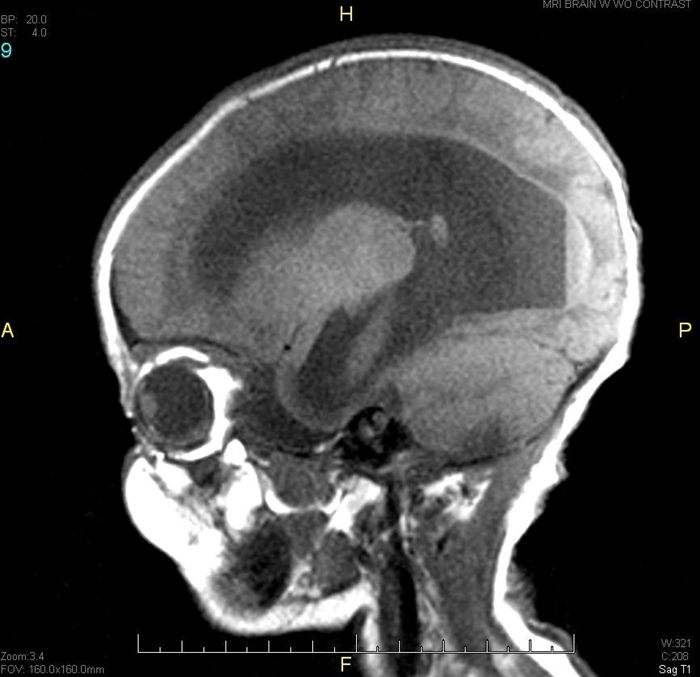A 1-month-old boy is brought to the emergency department by his mother due to fussiness and vomiting. Three days ago, the patient vomited after being laid down for a nap. The vomitus was not bloody or bilious. The mother thought the vomiting was due to gastroesophageal reflux and kept the infant upright after his next feedings. However, he continued to vomit several times a day and today has been difficult to console. Urine output remains normal. The patient was born at home via spontaneous vaginal delivery and is exclusively breastfed. He has received no vaccinations or medications. Temperature is 37.4 C (99.3 F) . Vital sign measurement also reveals intermittent bradycardia and hypertension. The anterior fontanelle is bulging. Eye examination shows a persistent downward gaze bilaterally. Cardiac examination reveals no murmurs. Extremities appear normal. Head imaging is as shown:  Which of the following is the most likely cause of this patient's presentation?
Which of the following is the most likely cause of this patient's presentation?
Definitions:
Required Return
The basic annual percent yield needed to appeal to individuals or businesses for investment in a specific project or security.
Cash Flows
The gross flow of cash and assets equivalent to cash moving into and away from a business operation.
Payback Period
Payback period is the amount of time it takes for an investment to generate an amount of cash flow equal to the original investment amount.
Net Cash Inflows
The amount of cash that a business receives over a period, minus the amount of cash outflows.
Q21: A newborn boy is evaluated in the
Q38: A 28-year-old graduate student comes to the
Q101: A 6-year-old boy with congenital deafness is
Q409: A 37-year-old man comes to the office
Q428: A newborn boy is undergoing examination in
Q537: A 12-year-old boy is brought to the
Q600: A 16-month-old girl is brought to the
Q1269: A 38-year-old man comes to the emergency
Q1287: A 24-year-old man comes to the office
Q1655: A 45-year-old man is brought to the